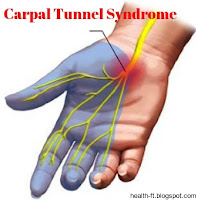Carpal Tunnel Syndrome
Carpal tunnel release surgery:
Carpal tunnel release is an operation done to relieve the pressure on the median nerve. Usually, people having this operation come in for surgery and go home that same day. The surgery usually is done using a local anesthetic, which affects only the area of your wrist. This means you won’t go to sleep for this operation.
During the operation, a small cut (incision) is made. This incision is usually on the palm side of your hand in the wrist area.
A ligament called the carpal transverse ligament is divided. This opens the carpal tunnel, relieving pressure on the median nerve. The operation usually takes about an hour.
After surgery:
Dressing. Unless instructed otherwise, keep the dressing over your incision clean and dry until your follow-up appointment with your doctor. Your doctor will remove the stitches under the dressing.
Activity. Do not lift anything with the hand you had surgery on until your doctor says it’s OK. Be sure to move your fingers regularly. This will keep them from getting stiff and help lessen the swelling.
When to see the doctor:
Visit your doctor if any of the following occur:
An increase in pain not relieved by pain medicine.
An increase in swelling not relieved by elevating your hand.
A large increase in the amount of drainage on your dressing.
An increase in the feeling of coolness or color changes in your fingers or fingertips.
A foul smell from the dressing.
Chills or fever of 101 F or above.
Carpal Tunnel Syndrome:
Carpal tunnel syndrome is a common condition that affects the wrist and hand. It occurs when too much pressure is put on the median nerve. The median nerve runs through the wrist to the hand and fingers. It goes through a passage in the wrist bones called the carpal tunnel. Any swelling in this “tunnel” causes the nerve to become pinched.
 This causes the pain, numbness, and tingling related to carpal tunnel syndrome. If the pressure is not relieved, the symptoms may get worse.
This causes the pain, numbness, and tingling related to carpal tunnel syndrome. If the pressure is not relieved, the symptoms may get worse.
Carpal tunnel syndrome may occur after a wrist fracture or injury that causes swelling. It also can occur with certain conditions like diabetes, kidney disease, pregnancy, thyroid disorder or obesity.
What are the symptoms of carpal tunnel syndrome?
Pain, which usually starts in the hand but may travel up the arm to the shoulder.
Numbness, tingling, or the feeling of “pins and needles” in the hand or fingers.
Burning feeling in the hand or fingers.
Tenderness in the wrist area.
Swelling in the wrist area.
Weakness or loss of strength in the hand.
How is carpal tunnel syndrome treated?
Treatment depends on how bad your symptoms are. Your doctor will check you and decide what treatments would be most helpful to you. Treatments for carpal tunnel include:
Wrist splints. Your doctor or therapist may prescribe wrist splints. Moving your hand and wrist up or down narrows the space in the carpal tunnel. This puts more pressure on the median nerve. Wrist splints help to reduce pressure by keeping your wrist in a relaxed position. Some splints are worn only at night. Others protect the wrist during work or other activities.
Hand and wrist exercises. These exercises are prescribed by your doctor or a Physiotherapist.
Medicine to reduce swelling. Your doctor may prescribe medicine to help reduce swelling. As the swelling in the carpal tunnel goes down, the pressure is relieved from the median nerve.
Medicine injected into the wrist area. Steroids are medicines that can be injected into the wrist area to help bring down the swelling in the carpal tunnel. When there is less swelling, there is less pressure on the median nerve.
Medicine. Your doctor may prescribe pain medicine and an antibiotic after surgery. Be sure to take these as directed.
Elevation. It’s important to keep your hand raised above the level of your heart as much as possible for the first 48 hours following surgery. This helps to reduce swelling and pain.



ReplyDeleteTENS machine work by sending electronic stimulating pulses across the surface of the skin and along the nerve strands. The stimulating pulses help prevent pain signals from reaching the brain.